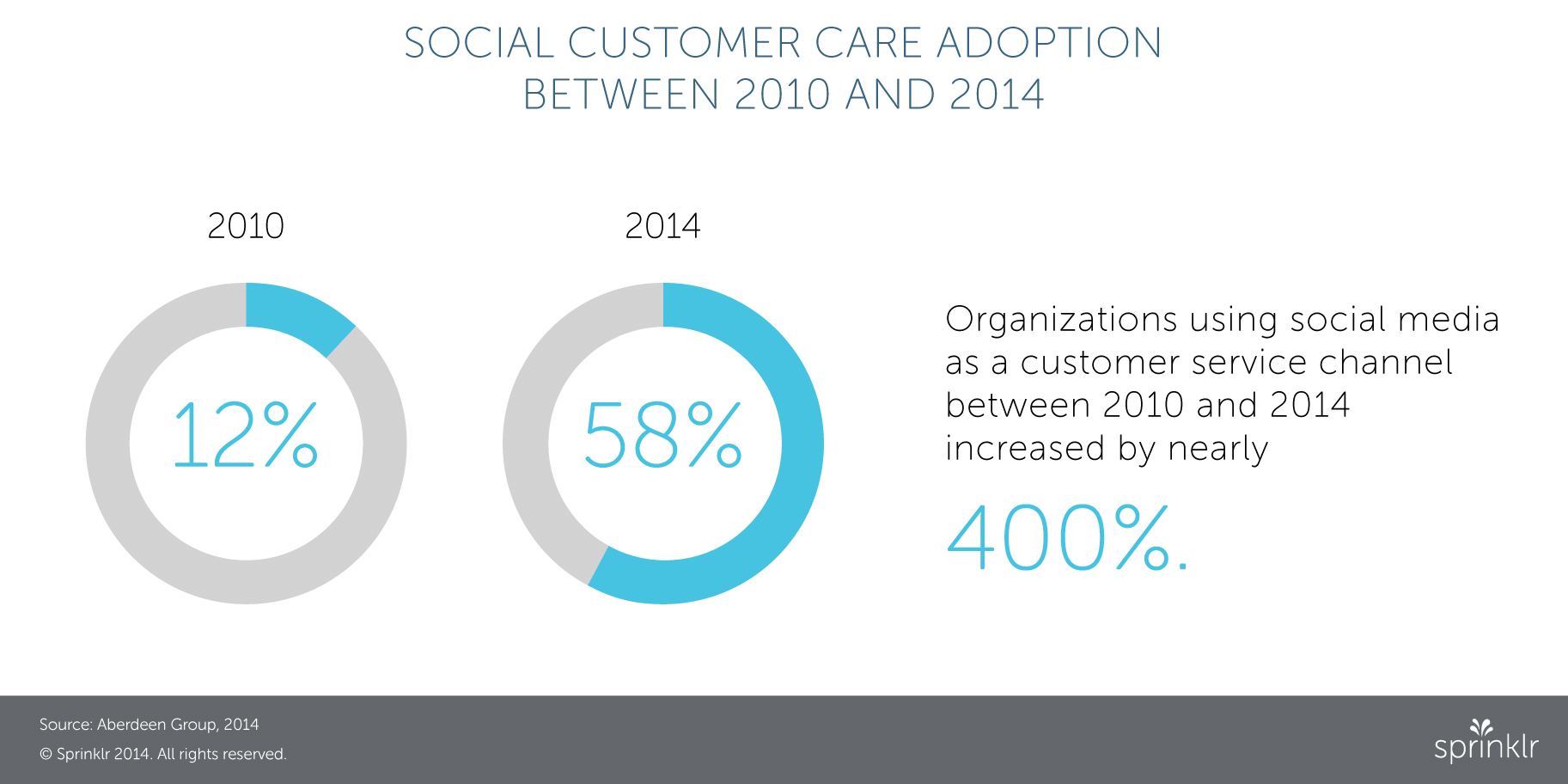Five years ago, social customer service was barely a blip on anyone’s radar. Only 10% of organizations where using social channels for customer service. This small pool included risk-takers with a tolerance for potential failure – companies like Comcast.
When Comcast established @ComcastCares in March 2008, it was – for lack of a better term – a pretty damn big deal. The global media and tech company was using Twitter to provide customer service at a time when many other brands didn’t even know the meaning of a tweet. Comcast was widely celebrated for the company’s innovative use of social media. And they deserved it.
But that was five years ago.
Today, the adoption of social media as a customer service channel has jumped to nearly 60%, according to research from Aberdeen Group. By the end of this year, that figure is expected to be 80%.
Social customer service is no longer an innovative risk, it’s something you’re expected to have. It’s no longer a discussion of “if” you should do social customer service, but “how.” And many companies might not be getting the “how” part right.
Here is the thing. If you build your social care program to be an independent entity, you will fail. Social media is not something that exists on its own, disconnected from the rest of the organization. Social customer care program is not limited to marketing or customer service department, but is instead an enterprise-wide responsibility. Your customers couldn’t care less if they are talking to your service department, your sales department, or your marketing department. All they want – and expect – is an amazing experience, no matter who they talk to and what channel they do it on.
Why? Because every single department plays a role in providing remarkable brand experience to every consumer they touch, and hence in retaining and acquiring customers and growing revenue.
Here are 3 reasons why your social customer care programs might not deliver results:
- Different teams use different tools
When you have multiple social media accounts on multiple social networks, customer-service related issues can come from anywhere. If you’re still managing things natively, you’ll miss these conversations entirely. If your company uses multiple disparate tools, things will fall through the cracks. It’s critical to get the right customer issues to the right team, which means you’ll need multiple departments working in the same environment. 2015 is a good time to upgrade to fuller, more comprehensive software solutions.
- Your approval processes are not optimized
Depending on the industry and sensitivity of a message, up to dozen different departments can be involved. You need to find a way to optimize your approval process so that if there’s a crisis, it doesn’t take you days to form a response. I recommend creating custom approval paths through a social management system that can map to your existing processes. If your legal team needs to see something, for example, they’ll get notifications within the platform and via email. This eliminates the need for word documents and spreadsheets. It also keeps messages in one environment, which will streamline and speed-up internal communication. And it provides detailed history and governance compliance.
- Lack of integration across people, processes, and technology
The people interacting with your brand on social media are often the same ones interacting with your brand in real life. Uniting your social media platform with your traditional CRM system is necessary to link social profiles with customer information. This way, you’ll know that “John Doe” isn’t just someone posting on your Facebook page… he’s also a loyal customer.
Integrating with your content asset management systems is critical as well. Companies spend thousands of dollars producing content that only one or two departments use. If you provide asses to your content company-wide, you will not only increase engagement, but will unify brand message and decrease costs.
It’s also important to connect your social customer service with your paid social activities. The worst thing you can do when a customer complains about your products/services is to serve them with a promoted post. Unfortunately, this will happen if your paid efforts aren’t integrated with your day-to-day social media management platform. Integration across paid, earned, and owned social media in one platform enables you to create automatic rules that prevent users who have raised complaints from being targeted with ads.
In conclusion…
Social customer service is something that should live beyond your customer service team – even beyond your social media team. As I said earlier, every department is connected to the customer experience, and thus has a customer service responsibility. The other part to this argument is that every department now has a customer. Your public relations team, for example, might consider news outlets a customer. To your human resources team, employees might be the customer. Every department has a customer to whom they owe a positive brand experience across the board and at every brand touchpoint.
This seamless brand experience is only possible when you optimize your internal processes and break down the walls that separate departments. It’s only possible when you make customer experiences a company-wide mission.
For more tips on setting up a successful social customer care program, take a look at the whitepaper we put together at Sprinklr.
Originally published on Entrepreneur


